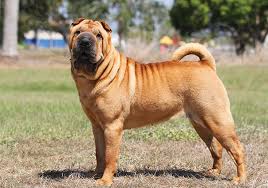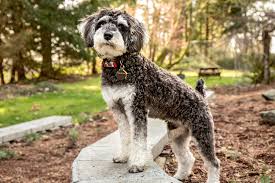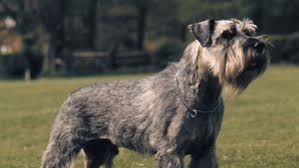Shar Pei Dog: Description and Complete Care Guide
The Shar Pei, also known as the Chinese Shar-Pei, is a distinctive and ancient breed of dog that originated in China. They were originally bred for hunting, herding, and guarding, but are now commonly kept as companion animals.
The Shar Pei’s most notable feature is its wrinkled skin, which gives the breed a unique and almost comical appearance. However, the wrinkles also serve a functional purpose – in ancient China, the Shar Pei’s loose skin allowed it to wriggle out of the grasp of predators or attackers.
Despite their rough exterior, Shar Peis are loyal and affectionate companions to their families. They can be aloof and reserved with strangers, but are typically calm and gentle with those they know and trust. They are also known for their intelligence and independent nature, which can sometimes make them challenging to train.
Like all breeds, the Shar Pei is prone to certain health issues. Some of the most common concerns include skin allergies, ear infections, and eye problems. Proper care and regular veterinary check-ups can help prevent or manage these issues.
Overall, the Shar Pei is a unique and fascinating breed with a rich history and loyal following. While they may not be the best choice for first-time dog owners, they can make wonderful companions for those who are willing to put in the time and effort to properly train and care for them.
Read Also: Mastiff Dog: Description, Health, Origin and Care Guide
Appearance, Size, Temperament and Personality of the Shar Pei Dogs

Let’s start with their appearance. The Shar Pei is one of the most distinct breeds out there, with their wrinkled skin and unique facial features. They look like they’re wearing a permanent frown, but don’t let that fool you – these dogs are actually quite happy and affectionate!
In terms of size, Shar Peis are a medium-sized breed, typically weighing between 45 and 60 pounds. They have a muscular build and a square-shaped head, which adds to their distinctive appearance.
Moving on to temperament, Shar Peis can be described as loyal, protective, and independent. They are often reserved with strangers, but once they get to know someone, they are fiercely loyal and protective of their family. However, this protective nature can sometimes make them prone to aggression if they are not socialized properly from a young age.
Now let’s talk about personality. Shar Peis are known for being strong-willed and stubborn, which can make them a bit of a challenge to train. However, they are also incredibly intelligent and capable of learning quickly, as long as they are properly motivated. They are also known for their affectionate nature with their family, and can be quite playful and goofy when they’re in the mood.
One thing to keep in mind when considering a Shar Pei is their grooming needs. Their wrinkles require regular cleaning and care to prevent infection and skin issues, and they also tend to shed quite a bit. However, with proper care and attention, a Shar Pei can make a wonderful and loyal companion.
The Shar Pei is a unique and fascinating breed with a distinct appearance, independent temperament, and affectionate personality. They may not be the easiest breed to train, but with patience and consistency, they can make wonderful companions for those who appreciate their unique qualities.
History and Origin of Shar Pei Dogs

The Shar Pei is believed to have descended from ancient fighting breeds that were used for both hunting and guarding. Some historians believe that the breed may have been developed by the Han Dynasty as early as 200 BC. These dogs were initially used as hunting dogs, but over time, they were also trained to guard the imperial palaces and nobility.
The Shar Pei’s loose skin was a unique adaptation to help them fend off predators during fights. If an attacker grabbed the Shar Pei by the skin, the dog could twist and turn, slipping out of the attacker’s grasp and delivering a counter-attack. This skill proved invaluable in the dog-fighting pits of ancient China, where the Shar Pei became a prized fighter.
The breed’s unique appearance and fighting skills made it popular among Chinese nobility, and it quickly became a status symbol. However, the breed’s popularity declined during the Communist Revolution in China, as dog fighting was banned and many breeds were eradicated. The Shar Pei was nearly lost to history, but a small number of dogs were smuggled out of China and brought to the United States in the 1970s.
In the US, the Shar Pei quickly gained popularity as a family pet, thanks to its affectionate and loyal nature. However, the breed was in danger of becoming extinct once again due to inbreeding and health issues caused by the breed’s wrinkled skin. To save the breed, breeders began crossbreeding Shar Peis with other breeds, such as the Chow Chow, to increase genetic diversity and improve health.
Today, the Shar Pei is a popular and beloved breed around the world. While the breed’s wrinkled skin is still a defining characteristic, it no longer serves a functional purpose, and breeders have worked hard to minimize the health issues that can result from excessive wrinkling.
The Shar Pei is known for its loyalty, intelligence, and affectionate nature, making it an ideal family pet. The breed is also a skilled guard dog, and its unique appearance is sure to turn heads wherever it goes. With a rich history that spans more than 2,000 years, the Shar Pei is a truly remarkable breed that continues to capture the hearts of dog lovers around the world.
Shar Pei Dog Breed Complete Grooming and Care Guide

Bathing: Bathing your dog is an important part of grooming. Dogs should be bathed every four to six weeks, but this can vary depending on their breed and activity level. Use a dog-specific shampoo and conditioner, and make sure to rinse thoroughly to avoid leaving any residue on your dog’s skin. Be careful not to get water in your dog’s ears, as this can cause infection.
Brushing: Regular brushing helps to remove loose fur and debris from your dog’s coat, preventing matting and tangling. Use a brush appropriate for your dog’s coat type, and be gentle to avoid irritating your dog’s skin. Brush your dog at least once a week, but daily brushing is recommended for dogs with long or thick coats.
Nail trimming: Trimming your dog’s nails is important for their comfort and health. Overgrown nails can cause discomfort and lead to injury. Use sharp, dog-specific nail clippers, and trim just the tip of the nail, avoiding the quick, which is the blood vessel that runs through the nail. If you’re unsure about trimming your dog’s nails, ask your vet or a professional groomer for help.
Ear cleaning: Cleaning your dog’s ears is important for preventing infection and removing excess wax and debris. Use a gentle, dog-specific ear cleaner and a soft cloth or cotton ball. Avoid using cotton swabs, which can push debris further into the ear canal. If your dog has chronic ear problems, consult your vet for advice on the best ear cleaning routine.
Dental care: Dental care is essential for your dog’s overall health. Regular brushing with a dog-specific toothbrush and toothpaste can help prevent dental problems such as plaque and tartar buildup. Dental chews and toys can also help keep your dog’s teeth clean and healthy. Regular dental checkups with your vet are also important for maintaining your dog’s oral health.
Exercise: Regular exercise is important for keeping your dog healthy and happy. The amount and type of exercise your dog needs will depend on their age, breed, and activity level. Most dogs require at least 30 minutes of exercise per day, but some breeds may require more. Make sure to provide your dog with plenty of opportunities to exercise, such as walks, runs, or playtime in a fenced yard.
Nutrition: Feeding your dog a balanced, nutritious diet is essential for their health and wellbeing. Choose a high-quality dog food that meets your dog’s nutritional needs based on their age, breed, and activity level. Avoid feeding your dog table scraps or human food, which can lead to obesity and other health problems. Make sure your dog has access to fresh, clean water at all times.
By following these grooming and care guidelines, you can help keep your dog healthy, happy, and looking and feeling their best. If you have any concerns about your dog’s health or grooming needs, consult your vet or a professional groomer for advice.
Read Also: Causes of Vent Pecking, Prolapsed Vent and Cannibalism among Chickens
Shar Pei Puppy

First, make sure that you are ready for the responsibility of caring for a puppy. Shar Pei puppies require a lot of time, attention, and training. They need to be fed multiple times a day, taken outside frequently for potty breaks, and given plenty of exercise and playtime to burn off their energy.
When looking for a Shar Pei puppy, it’s important to find a reputable breeder who has a clean and safe environment for their dogs. A good breeder will also be able to provide you with health records for both the puppy and its parents.
Be prepared to spend some time socializing your Shar Pei puppy. They can be wary of strangers and other dogs, so it’s important to expose them to new people, places, and situations early on to help them develop into well-adjusted adult dogs.
Training is also essential for a Shar Pei puppy. They can be stubborn and independent, so it’s important to start training early and use positive reinforcement methods to help them learn.
Overall, a Shar Pei puppy can make a wonderful addition to your family if you are prepared to put in the time and effort to care for and train them properly.
Read Also: The Environmental Impact of Proper Cement Disposal









